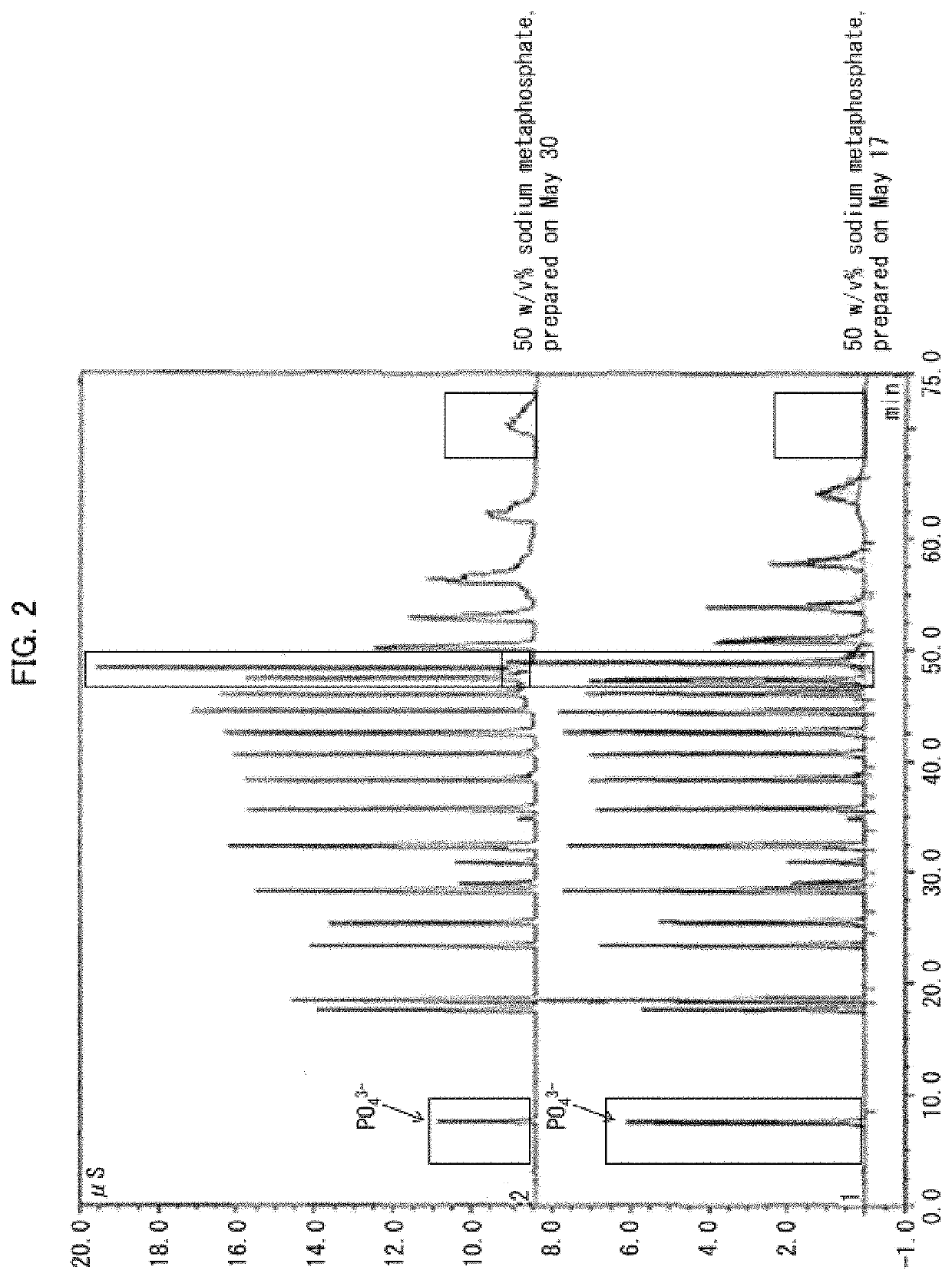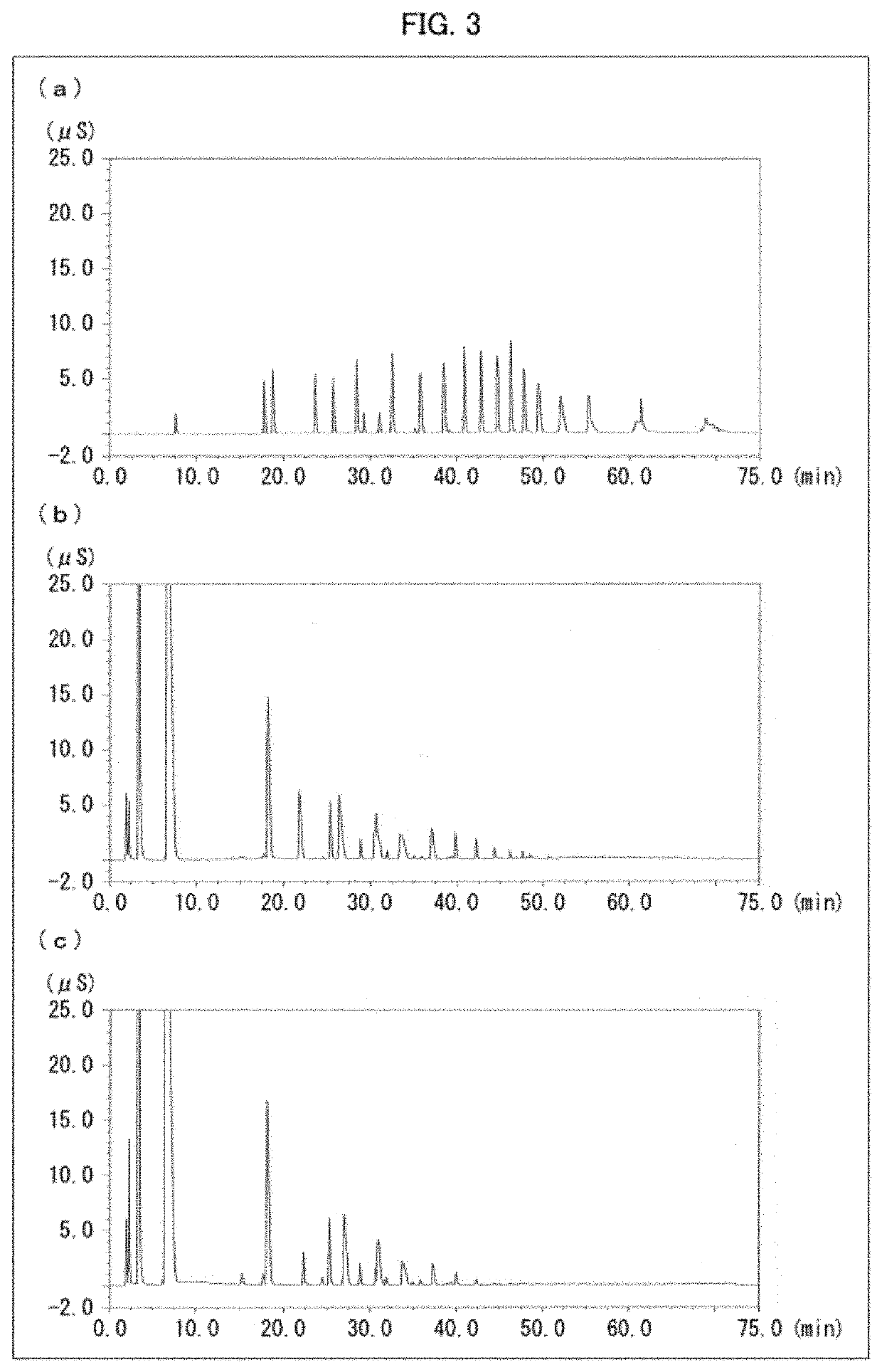Production method for substance using atp
a technology of adenosine triphosphate and production method, which is applied in the direction of enzymology, ligases, transferases, etc., can solve the problems of high cost of external supply of atp, and achieve the effect of low cost and high conversion ra
- Summary
- Abstract
- Description
- Claims
- Application Information
AI Technical Summary
Benefits of technology
Problems solved by technology
Method used
Image
Examples
reference example 1
[Reference Example 1] Construction of Expression Vector for Polyphosphate Kinase
[0135]In accordance with information disclosed in PCT International Publication No. WO 2006 / 080313, the following sequence was chemically synthesized at Eurofins Genomics K.K.: a gene sequence which (i) codes for a polypeptide that is the same as polyphosphate kinase (NCBI Reference Sequence: WP_023109529) (amino acid sequence: SEQ ID NO:1, base sequence: SEQ ID NO: 11) derived from Pseudomonas aeruginosa except that 81 amino acids at the N terminus of the polyphosphate kinase are cut off and alanine at position 82 is substituted with methionine (initiation codon), (ii) which has been subjected to codon optimization so as to fit with an E. coli host and (iii) has an NdeI site added at the 5′ terminus of the gene sequence and an EcoRI site added at the 3′ terminus of the gene sequence. This gene was digested with NdeI and EcoRI, and inserted between NdeI and EcoRI restriction sites downstream of the lac p...
reference example 2
[Reference Example 2] Preparation of Recombinant Organism that Expresses Polyphosphate Kinase
[0136]E. coli HB101 competent cells (produced by Takara Bio Inc.) were transformed with the recombinant vector pPPK constructed in Reference Example 1, thereby obtaining a recombinant organism E. coli HB101 (pPPK). Furthermore, E. coli HB101 competent cells (produced by Takara Bio Inc.) were transformed with pUCN18, thereby obtaining a recombinant organism E. coli HB101 (pUCN18).
reference example 3
[Reference Example 3] Expression of Polyphosphate Kinase Gene in Recombinant Organism
[0137]The two types of recombinant organism (E. coli HB101 [pUCN18] and E. coli HB101 [pPPK]) obtained in Reference Example 2 were each inoculated into 5 ml of 2×YT medium (1.6% / 0 triptone, 1.0% yeast extract, 0.5% sodium chloride, pH7.0) containing 200 μg / ml of ampicillin, and cultured with shaking at 37° C. for 24 hours. Each of the culture solutions obtained through the culture was subjected to centrifugation and thereby bacterial bodies were collected, and the bacterial bodies were suspended in 1 ml of 50 mM Tris-HCl buffer (pH8.0). This was homogenized with use of a UH-50 ultrasonic homogenizer (produced by SMT), and then bacterial residues were removed by centrifugation. In this way, cell-free extracts were obtained.
[0138]Polyphosphate kinase activity was measured with use of these cell-free extracts. The polyphosphate kinase activity was measured in the following manner. 5 mM sodium metaphosp...
PUM
| Property | Measurement | Unit |
|---|---|---|
| degree of polymerization | aaaaa | aaaaa |
| degree of polymerization | aaaaa | aaaaa |
| degree of polymerization | aaaaa | aaaaa |
Abstract
Description
Claims
Application Information
 Login to View More
Login to View More - R&D
- Intellectual Property
- Life Sciences
- Materials
- Tech Scout
- Unparalleled Data Quality
- Higher Quality Content
- 60% Fewer Hallucinations
Browse by: Latest US Patents, China's latest patents, Technical Efficacy Thesaurus, Application Domain, Technology Topic, Popular Technical Reports.
© 2025 PatSnap. All rights reserved.Legal|Privacy policy|Modern Slavery Act Transparency Statement|Sitemap|About US| Contact US: help@patsnap.com



